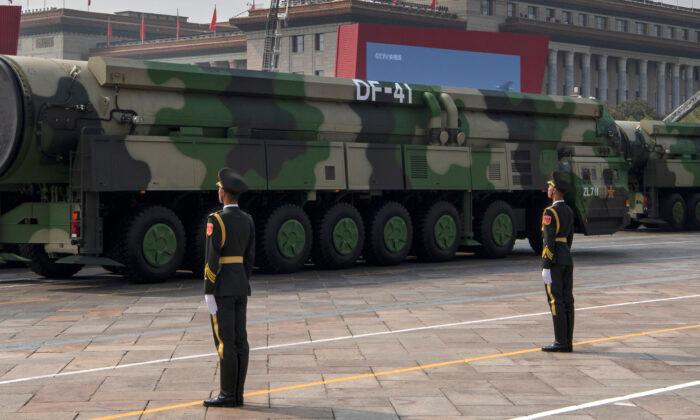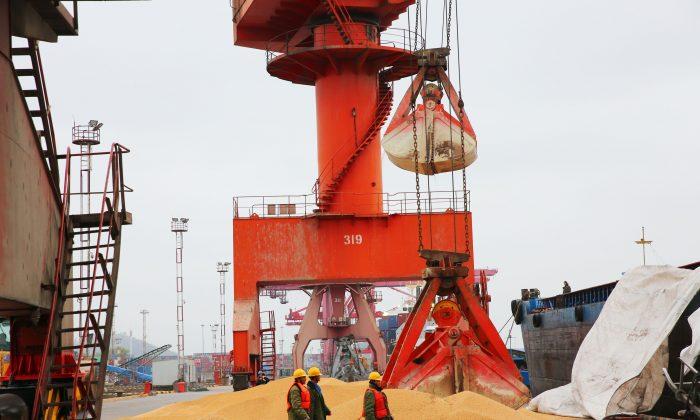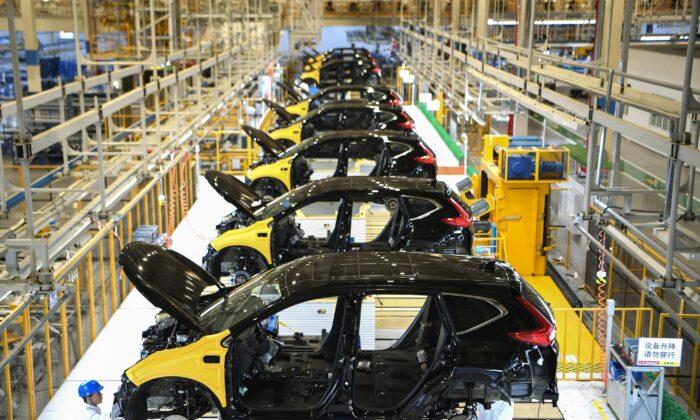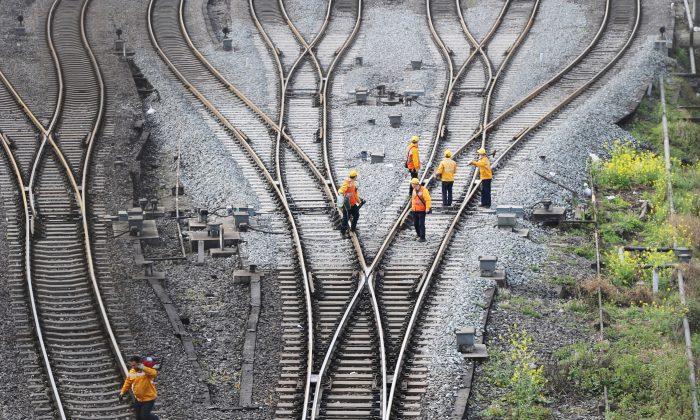News Analysis
Defense Minister Taro Kono
told a press conference at Japan’s annual defense review that China is now designated as a greater regional security threat than North Korea.
Kono stated on Sept. 27 that China may claim to have peaceful intentions, but by “deploying air and sea assets in the Western Pacific and through the Tsushima Strait into the Sea of Japan with greater frequency,” the communist country has become a national security concern.
China fully validated Japan’s concerns on Oct. 1 with a parade in Beijing’s Tiananmen Square to celebrate the
70th anniversary of the Communist Party’s takeover of China. The muscular show featured 100,000 performers 15,000 military personnel, 580 pieces of military equipment and 160 aircraft streaking overhead.
Tens of thousands of multi-colored dancers singing patriotic songs were followed by a long row of booming 105 millimeter howitzers saluting thousands of gun-raised, goose-stepping troops in perfect uniformity. Overhead, six of China’s new J-20 stealth fighters roared low and then broke into a series of precision formation moves.
Chinese leader Xi Jinping rode on a red carpet down the Avenue of Eternal Peace in an open-topped limousine past long rows of military gear. Speaking to the communist masses in a gray Mao-jacket, Xi bellowed: “No force can shake the status of our great motherland, and no force can stop the progress of the Chinese people and the Chinese nation.”
Holding the birthday in the same venue that Mao Zedong declared the founding of the “Peoples’ Republic of China” on Oct. 1, 1949, Xi trumpeted Mao and the primacy of the Communist Party.
With ecstatic crowds cheering and waving Chinese flags, Xi trumpeted that “Today a socialist China is standing in front the world.” But Xi warned the world, “No force can stop the Chinese people and the Chinese nation forging ahead.”
The centerpiece of the Chinese regime’s saber-rattling display of advanced communist weapons of mass destruction was the dozen 43-foot long JL-2 submarine-launched ballistic missiles (SLBM) that each have a range of at least 4,500 miles and can deliver a thermo-nuclear payload equivalent to one million tons of TNT. The 12 missile grouping represents the weapons throw weight for each of China’s
eight modern Type 094 Jin-class nuclear-powered ballistic missile submarines (SSBN) that now patrol the South China Sea.
Another highly anticipated missile debut was four transporter-erector-launchers each carrying China’s first hypersonic glide vehicle named the Dong Feng 17 (DF-17) from the People’s Liberation Army Rocket Force (PLARF). First
revealed in 2017, the highly maneuverable DF-17 travels at about 4,000 miles per hour and is
rated by Defense Info as “optimal” for strikes against Taiwan from the PLA bases on China’s eastern coast.
The parade finale featured the first public release of battalion of 16 Dong Feng 41 (DF-41) intercontinental-range ballistic missiles (ICBM) mounted on transporter-erector-launcher vehicles. The 70,000 pound missile can launch in 3-5 minutes to hit most U.S. cities in about 30 minutes. The DF-41 is armed with 3-6 multiple independent targetable reentry vehicle (MIRV) nuclear warheads each rated at 50-100,000 tons of TNT.
Japan Self-Defense Forces have understood for decades the unpredictable nature of North Korean leader
Kim Jong-un and developed a robust defense against North Korea’s high-flying and slow-moving missiles that remain similar to 1980s-era Soviet Scud missiles.
The Epoch Times
reported in the run-up to the 70
th anniversary celebration that China under Xi has embraced a ‘Military-Civil Fusion’ strategy aimed at fully-integrating its civilian industry base into the People’s Liberation Army supply chain.
Tokyo responded to China’s rising security threat by declaring in December 2018 that Japan’s Maritime Self-Defense Force will convert its first two Izumo-class helicopter destroyers—that feature 814 foot runways, expansive flight decks and large hangars—into Japan’s first aircraft carriers since WW II. JS Izumo and JS Kaga will each operate a 20-plane squadron of state-of-the-art Lockheed Martin F-35B fighters capable of performing short take-offs and vertical landings.
Japan Air Self-Defense Force also intends to buy at least another 105 F-35As attack fighters that will be equipped with the same Northrup Grumman
AN/APG-83 Scalable Agile Beam Radar and integrated theater domination package as the 66 advanced F-16C/D fighters the Trump administration agreed to sell to Taiwan in mid-August.
Chriss Street is an expert in macroeconomics, technology, and national security. He has served as CEO of several companies and is an active writer with more than 1,500 publications. He also regularly provides strategy lectures to graduate students at top Southern California universities.





